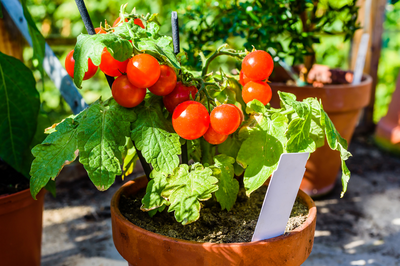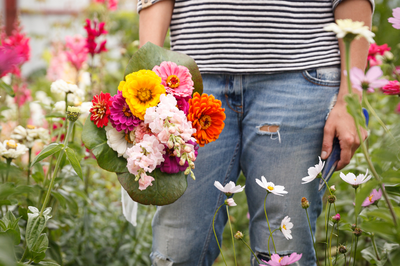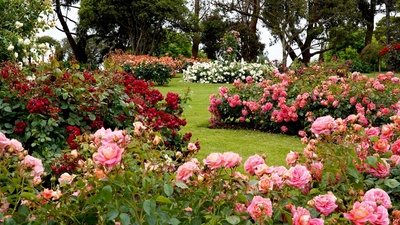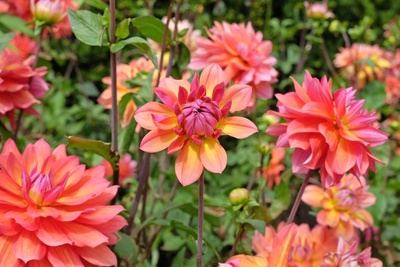
Colour plays a hugely important part of making a garden. The right combination of colours can create a sense of tranquillity, or add excitement and vibrancy to a dull space. Using colour in your garden is easy to do once you know the principles, and it opens up a whole new way of putting plants together.
Using colour to create mood
Colours are often divided into ‘cool’ and ‘hot’ tones. Cool colours, such as blue, purple and green, are good for creating a restful, calm atmosphere, whereas hot colours like red, orange and yellow are ideal for stimulating, lively environments.
When you’re trying to decide what colours go well together in the garden, a colour wheel is just what you need. This fabulously simple tool helps you choose the right colours, whatever effect you’re going for. Colour wheels are available at art shops, and there are also plenty of examples online.
Harmonising colours, for example, pink and red, or blue and purple, are placed next to each other on the colour wheel. These colours sit easily together, creating natural-looking combinations with no strong contrasts.
Complementary colours, such as blue and orange, are located diagonally opposite each other on the colour wheel. The nifty thing about complementary colours is that, thanks to the science behind light wavelengths, putting them together makes both colours appear more vivid. Complementary colours are ideal for adding a dash of spice to a planting scheme based on harmonising colours – so for example, orange Geum ‘Totally Tangerine’ looks fabulous dotted through a combination of blue delphiniums and purple lavender.
Creating illusions with colour
Blue tones tend to recede, so painting a fence blue or having blue-themed planting towards the back of a garden is a useful trick to make space feel bigger. Red tones seem closer than they are, so a plant in a bright red pot will always catch the eye, making a great focal point. And to disguise a shed or some other garden structure, paint it dark green or even black and watch it disappear into the background.
Garden colour combinations
Combining these blue, purple and white flowers creates a cool, peaceful effect, with evergreen silver and green foliage keeping interest going through the winter months.
- Lavandula ‘Hidcote’
- Salvia ‘Amistad’
- Leucanthemum ‘Snowcap’
- Astelia ‘Silver Spear’
- Buxus sempervirens
Mixing complementary colours purple and orange creates a dramatic garden colour scheme. This combination looks best in late summer, with the evergreen pittosporum and the dried flower heads of the sedum and grasses adding structure through winter.
- Sedum ‘Purple Emperor’
- Crocosmia ‘Emily McKenzie’
- Dahlia ‘Sunshine’
- Pittosporum ‘Tom Thumb’
- Miscanthus ‘Kleine Silberspinne’
Using colour to create different effects in your garden is great fun and very satisfying. If you want some inspiration, visit our garden centre to see what’s in flower, and try out a few combinations for yourself. The possibilities are endless!




